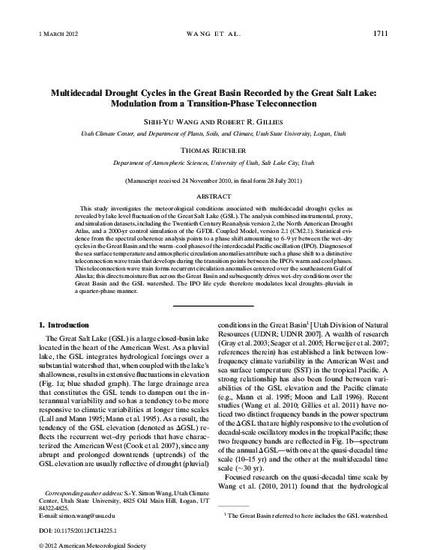
This study investigates the meteorological conditions associated with multidecadal drought cycles as revealed by lake level fluctuation of the Great Salt Lake (GSL). The analysis combined instrumental, proxy, and simulation datasets, including the Twentieth Century Reanalysis version 2, the North American Drought Atlas, and a 2000-yr control simulation of the GFDL Coupled Model, version 2.1 (CM2.1). Statistical evidence from the spectral coherence analysis points to a phase shift amounting to 6–9 yr between the wet–dry cycles in the Great Basin and the warm–cool phases of the interdecadal Pacific oscillation (IPO). Diagnoses of the sea surface temperature and atmospheric circulation anomalies attribute such a phase shift to a distinctive teleconnection wave train that develops during the transition points between the IPO’s warm and cool phases. This teleconnection wave train forms recurrent circulation anomalies centered over the southeastern Gulf of Alaska; this directs moisture flux across the Great Basin and subsequently drives wet–dry conditions over the Great Basin and the GSL watershed. The IPO life cycle therefore modulates local droughts–pluvials in a quarter-phase manner.
